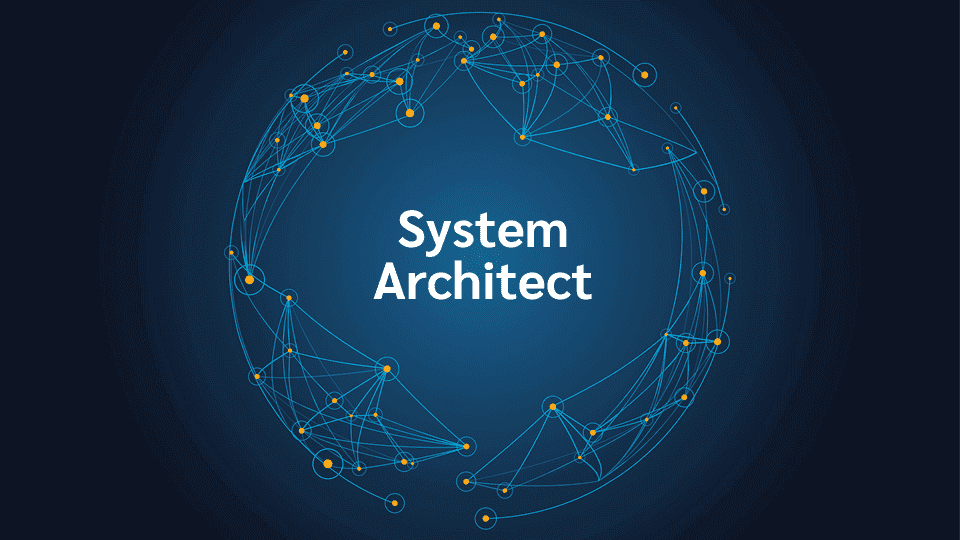Build strategy and business capability maps
Build strategy views, understand your customer’s journey and where value streams lie, and build business capability maps to align your business to technology investments. Create line-of-sight views from strategy through capability, business service, and the applications and infrastructure that support it. Run analytics to understand risk, cost, and best solution approaches.
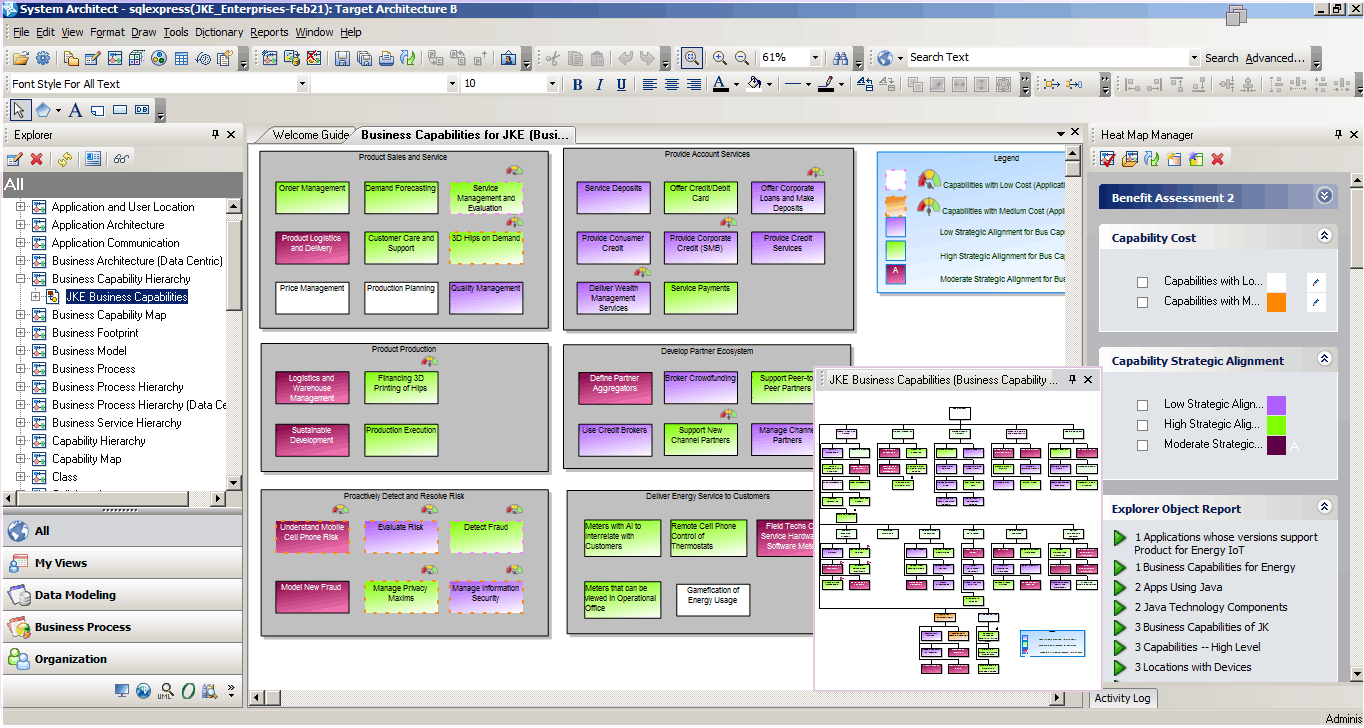 Business capability map and business capability hierarchy views, with analytics applied showing strategic alignment of capabilities and cost of underlying applications (via business services)
Business capability map and business capability hierarchy views, with analytics applied showing strategic alignment of capabilities and cost of underlying applications (via business services)
Use full-featured web client
Use either the System Architect rich client or the System Architect XT thin web client to build or edit models of the enterprise architecture.
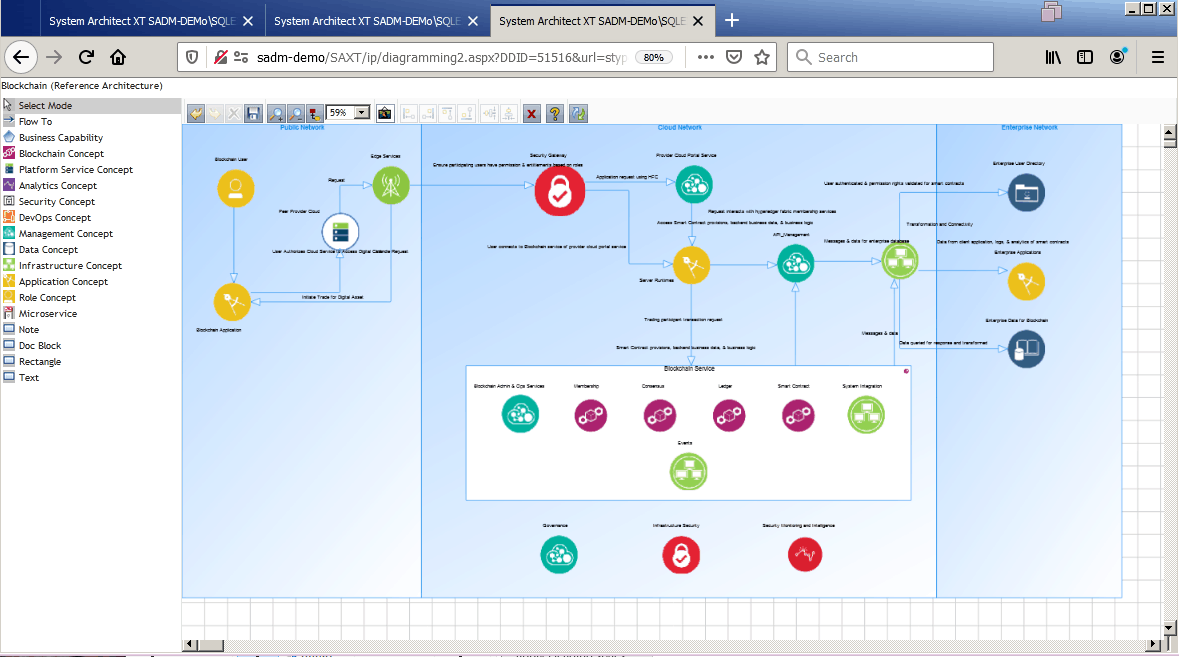 Build or edit diagrams or definitions in the System Architect XT web client
Build or edit diagrams or definitions in the System Architect XT web client
Use industry-standard frameworks, patterns and methods
Use industry-standard frameworks such as TOGAF 10, ArchiMate, DoDAF 2, Unified Architecture Framework (UAF), or NATO Architecture Framework (NAF), and adjust it to suit your needs using System Architect's renowned customizable metamodel.
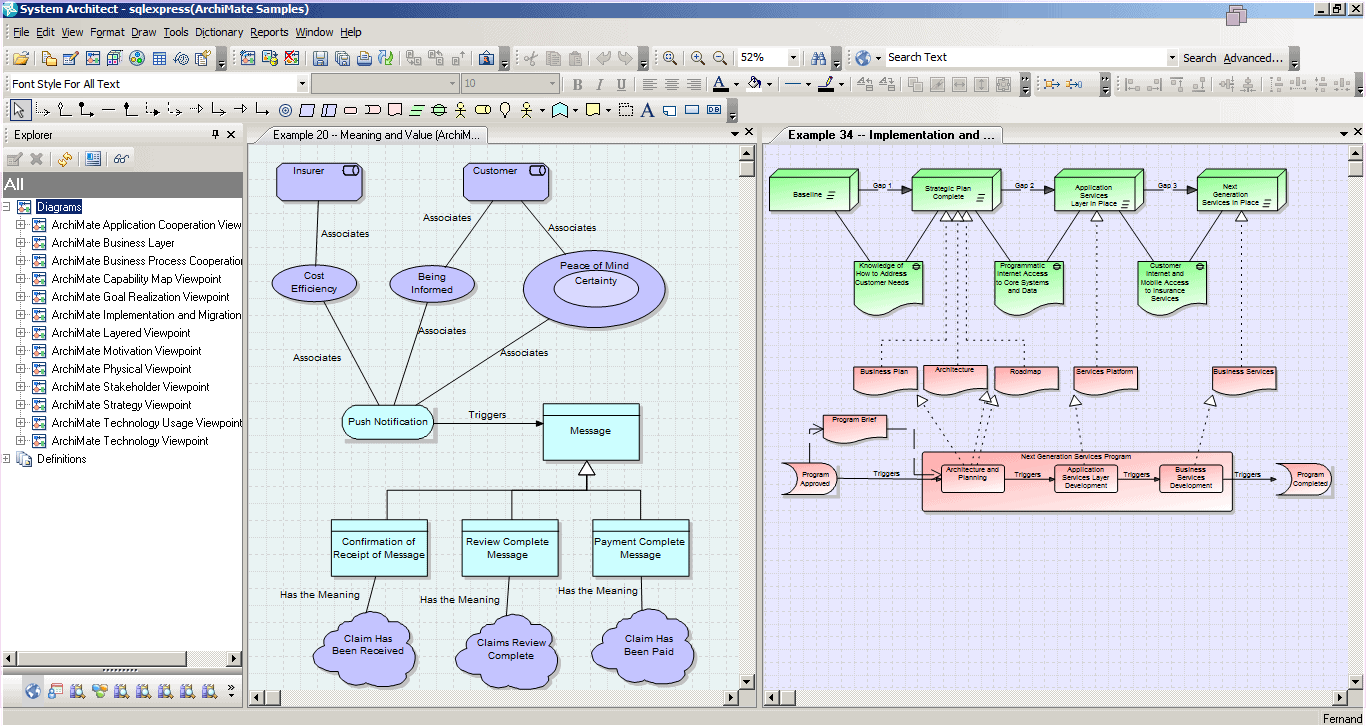 Native ArchiMate 3 add-on supports all the viewpoints of the popular framework
Native ArchiMate 3 add-on supports all the viewpoints of the popular framework
Jump start the architecture by reusing industry-standard patterns such as the Technology Business Model (TBM) or the American Productivity & Quality Center (APQC) to get your digital transformation efforts underway.
Use the latest industry icons from Microsoft Azure, Amazon Web Services (AWS), IBM Garage Method, or Google Cloud templates to visualize your digital transformation.
Customize metamodel and automatically capture sources of record
A key enabler of enterprise architecture is being able to customize the metamodel to match sources of record, so that you can properly capture enterprise information. System Architect is unmatched in the industry for its ability to customize its metamodel to great breadth, depth, and ease. Easily add new properties to existing definition types to match sources of record; create new definition, diagram, symbol, and relationship types with model-centric rules; or create an entirely new framework to match an in-house enterprise architecture method. Customizations can be done now and into the future of your enterprise architecture journey; customizations are never impeded upon by new released versions of the tool.
Use System Architect’s open API for REST or COM with built-in VBA 7.1 to automatically harvest information from sources of record, or simply import information from spreadsheets via CSV or XML.
Utilize a data-driven or 'model-based' approach
The enterprise architecture repository becomes a single source of the truth, harvesting information from disparate sources of record, with a data centric approach so that all diagram views and matrices represent your corporate information.
Build roadmaps for digital transformation
Strategically and tactically plan digital transformation to gain cost and efficiency advantages, and build roadmaps for change. Build roadmaps of any EA artifact – such as capability roadmaps to understand when new capabilities can be fielded, or roadmaps for systems, applications or technologies to understand rationalization and upgrades to guide your budgeting process.
Perform master data management
System Architect's strong data modeling capabilities, with logical and physical data models, and an underlying data dictionary integrated with business processes (BPMN) or data flow techniques, enable you to establish an unambiguous vocabulary of the data being worked on and created by the applications that the solution teams are developing.

Analyze Salesforce.com, SAP, and other ERP systems
The System Architect ERP add-in enables you to reverse engineer ERP systems to analyze their data model tables, and their related application components and processes. Select important parts of the ERP data model (and its applications and processes) to import into System Architect, where its strong data modeling capabilities enable you to analyze the data model of the ERP system within the scope of the EA. This is a feature unique in the enterprise architecture world.
Build and compare current state and future state architectures
Baseline your enterprise architecture and create multiple side-by-side future-state architectures using a feature called workspaces, which are layers of the architecture. Compare future-state architecture alternatives side-by-side, selectively merge contents, and at some point baseline a desired future-state architecture to become a new current state, and create new future-state architectures. Workspaces enable different departments to work on the architecture independently, and then merge their work into the corporate EA.
Cause-effect and landscape heatmap analysis
Quickly get a 50,000-foot view of the architecture through System Architect's unique Network- and Landscape-style Explorer diagrams, that allow you to auto-visualize reports showing calculated (inferred) relationships between enterprise architecture artifacts. For example, visualize what capabilities are put at risk by application versions utilizing technologies that have a security risk in an automatically generated network traceability diagram.
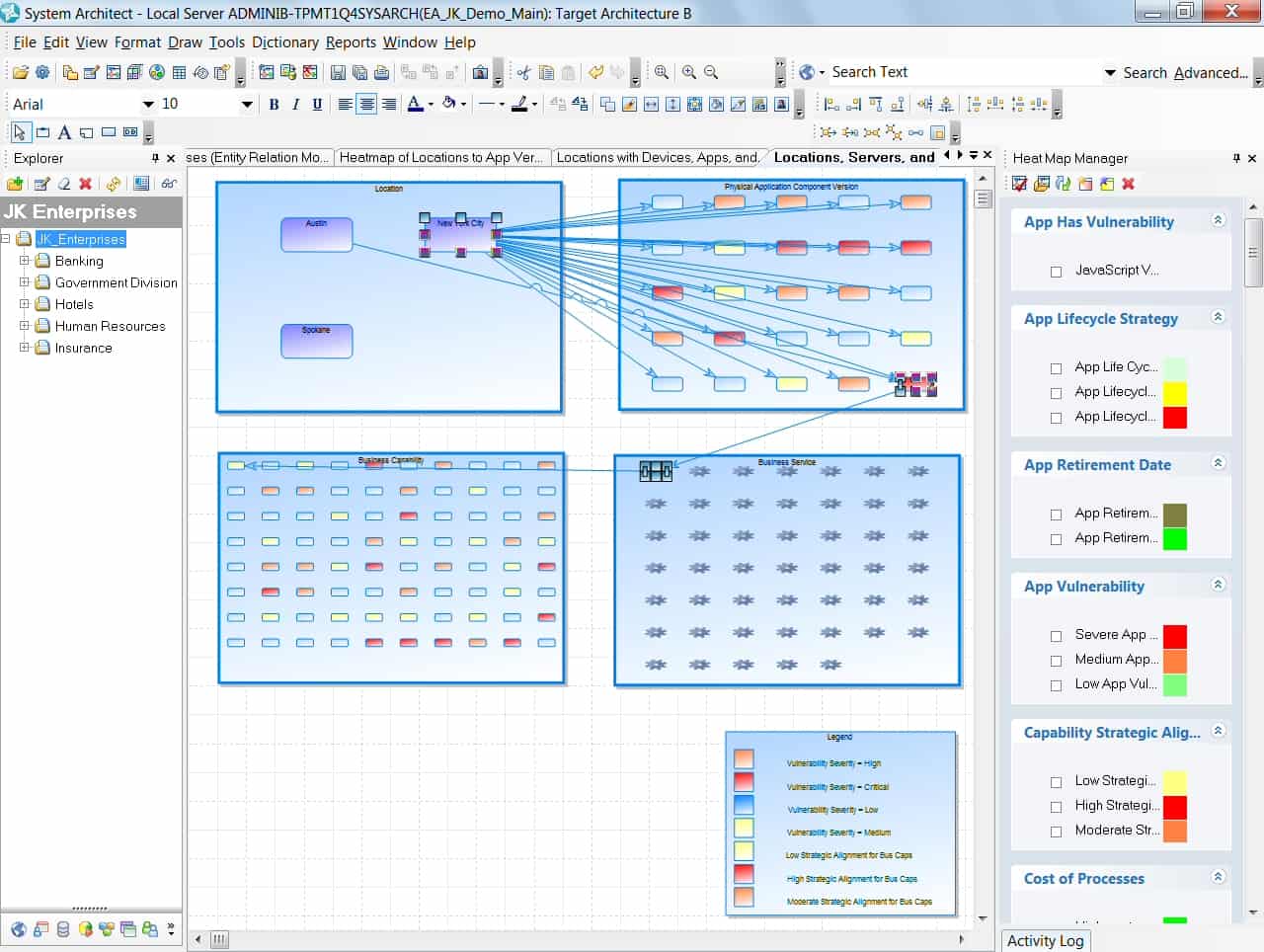
Or automatically create a landscape heatmap with application versions placed inside the capabilities they enable (and not showing the in-between element types). The enterprise architecture world is your oyster with Explorer diagrams, which enable you to create visualizations of any combination of architecture elements on the fly in minutes.
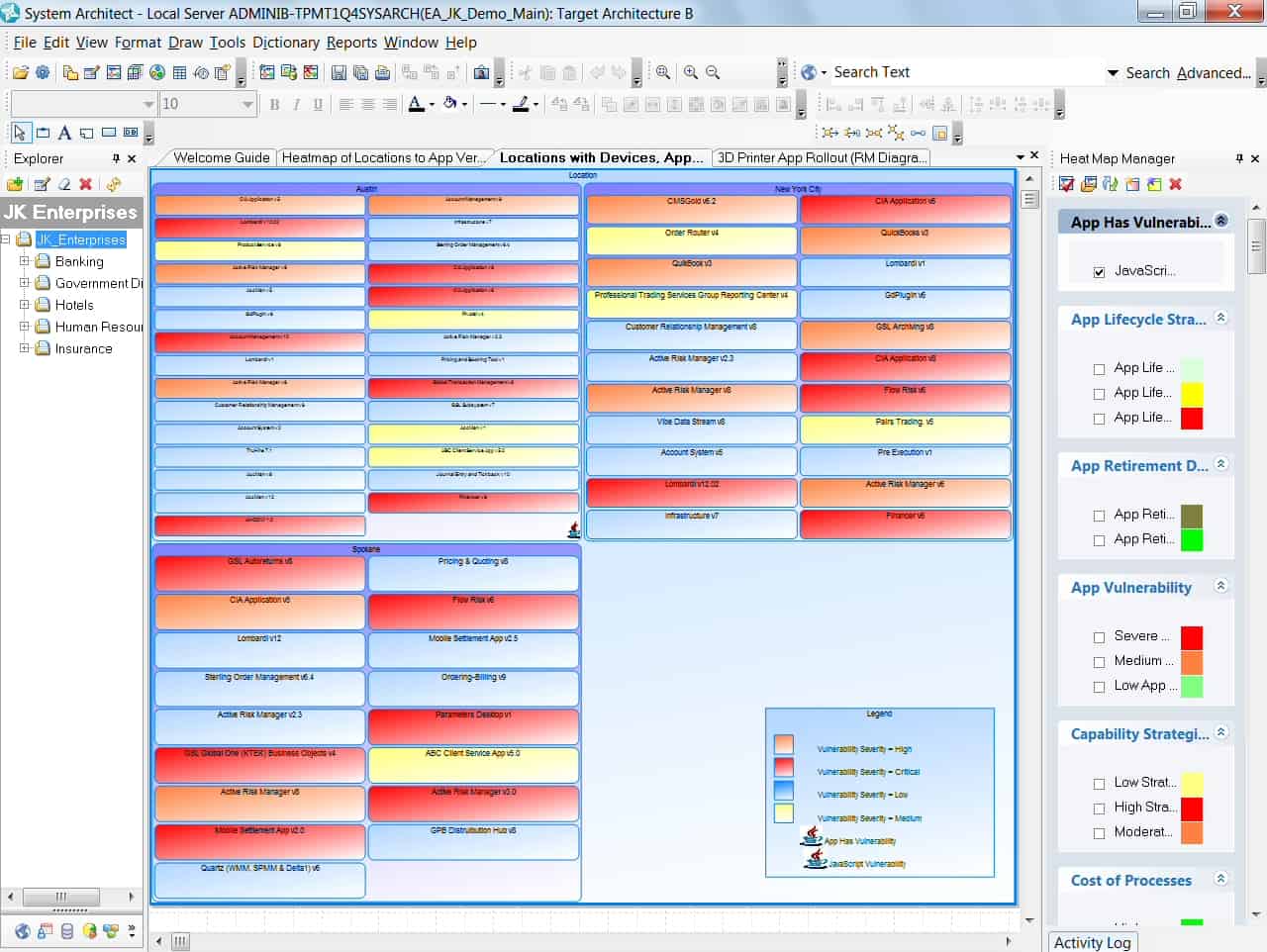
Perform application portfolio analysis
Utilize out-of-box analytics to visualize portfolio analysis or write your own analytics on the fly in seconds using a wizard front end to the built-in SQL reporting system. Map decision analysis results into System Architect from UNICOM Focal Point using the integration between the tools, or map in APM measures from other industry-leading Project and Portfolio Management tools.
Integrate to solution design, requirements and change management
System Architect is one of the few enterprise architecture tools to embrace and implement Open Service for Lifecycle Collaboration (OSLC) standards. You can create traceability links between the architecture and related aspects of enterprise information such as requirements, change requests, action items, or solution designs in other architecture tools. A simple right-mouse click enables you to see information in other 'friend' tools across the network and create links to relevant artifacts in them, then see and navigate those links at any time. OSLC creates a federated picture of corporate information and helps make enterprise architecture more valuable, helping you take it out of its ivory tower. Use this traceability to govern solution design, and align to the DevOps processes of release management, testing, and deployment.
Related products, solutions and news
System Architect 11.4.11.1 release
